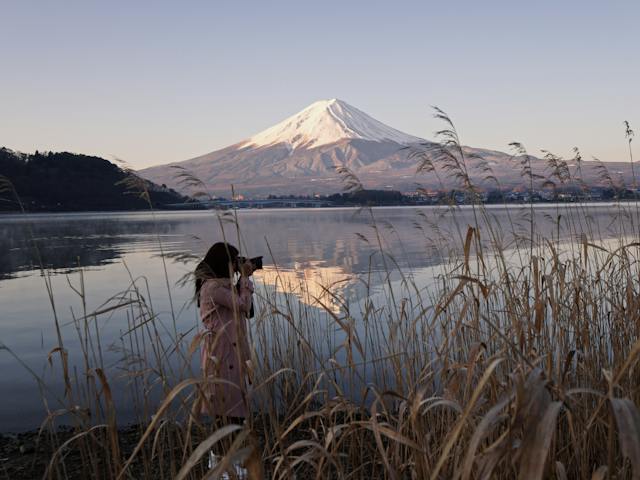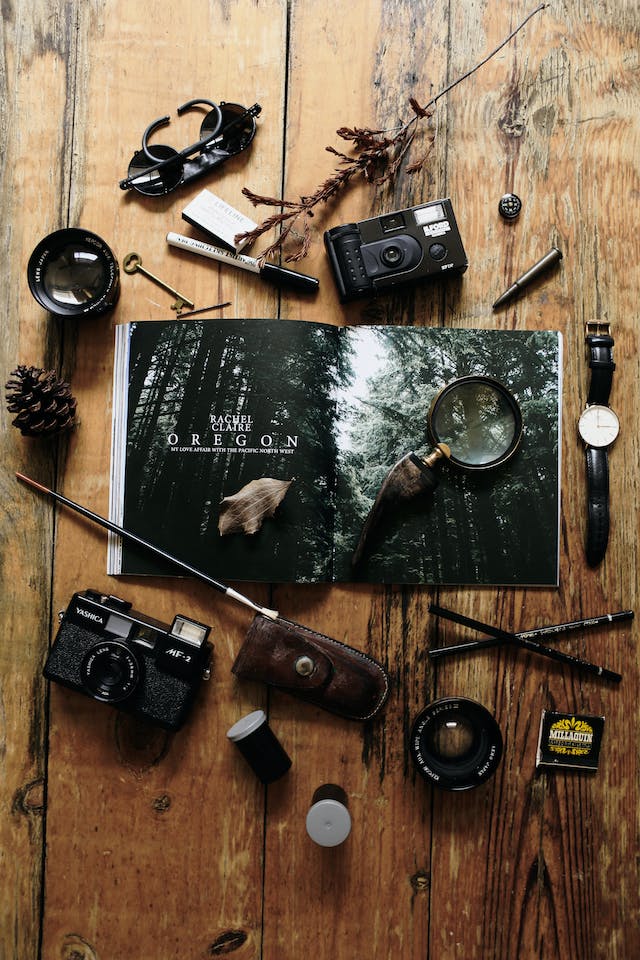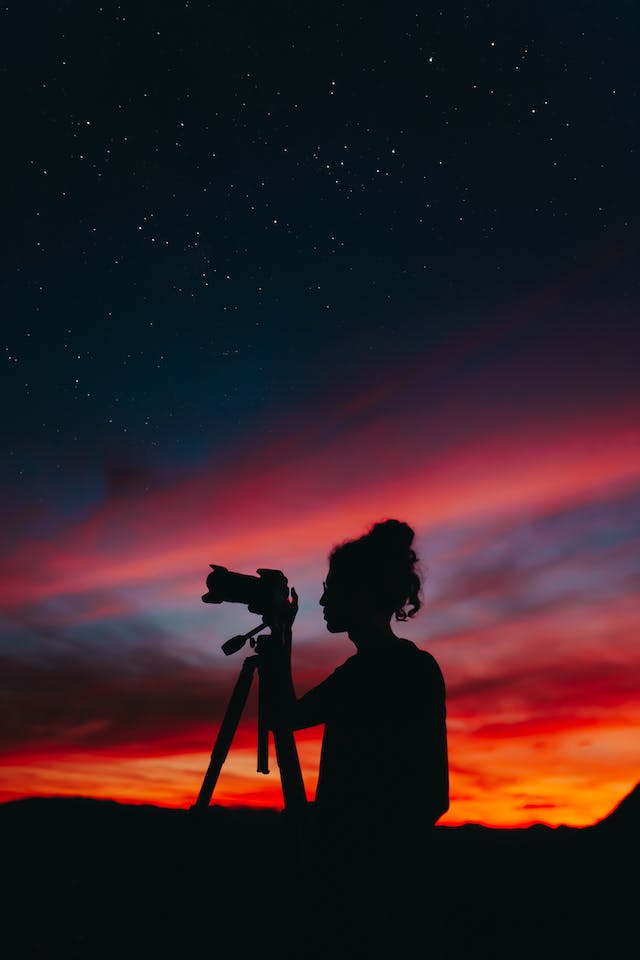How to Make Your Wildlife Pictures Stunning in (2024): Are you eager to become a wildlife photographer and take exceptional pictures of nature’s amazing animals? This comprehensive guide will support you as you explore the intricacies of wildlife photography. From honing your skills and selecting appropriate equipment to capturing stunning images by utilizing powerful techniques. Take on this challenge and see how your photographs turn into memorable works of art! Let’s dive in together, learning what it takes to make stunning wildlife images.
Key Takeaways on How to Make Your Wildlife Pictures Stunning in (2024)
- Master the art of wildlife photography and create stunning images with patience, knowledge of animal behavior, and a keen eye for detail.
- Respect the environment by practicing responsible photography techniques such as maintaining safe distances from animals and being mindful of others’ experiences.
- Utilize advanced post-processing methods to take your images to the next level!
Mastering the Art of Wildlife Photography

A wildlife photographer must have patience, an awareness of how animals interact in their environment, and a sharp eye for small details to capture astounding images. These characteristics are necessary not only for creating beautiful photos but also for appreciating nature’s habitats and the creatures living there.
Having these skills will be beneficial when encountering the specific hardships that come with photographing wildlife, which consequently yields genuine photographs showing each animal’s unique traits.
Patience and Observation:
Wildlife photographers must possess a large amount of patience and the ability to observe carefully in order to capture remarkable wildlife photos. By researching their subject beforehand, they can gain insight into animal behavior, allowing them to be better equipped when waiting for that perfect moment to shot, which often requires hours or even days! Nevertheless, with this time spent observing nature closely comes great reward. One simply needs to lie flat on the ground while patiently watching until just the right moment happens. It is worth it as many stunning images have been created by these dedicated photographers who were willing to devote so much effort and understanding towards capturing exquisite wildlife shots.
Understanding Animal Behavior:
Wildlife photography is dependent on having a good knowledge of the behavior of animals in their natural environment. It is essential to observe them carefully and learn about their behavioral traits so that one can take photos that are more than just ordinary. Many interesting behaviors such as orientation, social interaction, and communication methods for reproduction or defense/aggression when hunting or scavenging need to be studied for better results in wildlife photography.
Patience plays an equally important role. By being patient enough with studying animal habits and predicting movements you will have greater chances at capturing truly captivating images – those that really capture the beauty of nature’s wildest subjects through your photographs!
Developing a Keen Eye for Details:
Having a sharp eye for detail is necessary to be successful in wildlife photography. It involves recognizing small changes such as light, the animal’s position, and movements that can produce remarkable and stunning photos together. By carefully observing how an animal behaves together with its habitat, you will have more understanding of their behavior so it would be easier to seize rare moments accurately.
Testing your camera focuses and out different views, perspectives, and lighting schemes are an excellent way of coming up with striking imagery concerning wildlife subjects. Learning to use your gear inside-out plus putting those configurations suitably allows for crisp photographs even when conditions prove challenging. Developing this same sense of detail eventually unearths novel opportunities which could possibly level up your portfolio further!
Essential Gear for Stunning Wildlife Photos
Successfully creating remarkable wildlife photographs requires a combination of talent, fortitude, and suitable equipment. Having the correct camera, picking ideal, prime lenses as well, and deploying tripods or monopods are critical in order to obtain breathtaking wildlife shots.
Investing in quality gear is imperative for taking unforgettable pictures that illustrate nature’s splendor and grandeur.
Choosing the Right Camera:
Choosing a camera specifically for wildlife photography is an important decision that will determine the quality of your photographs. Several criteria, such as FPS rate, autofocus points, and high ISO performance should be taken into account when looking for the best one to suit these needs. Highly recommended models include Canon EOS R5, Nikon Coolpix P1000 Sony Cyber-shot RX10 IV, and Olympus OM SYSTEM OM-1.
Having knowledge about its capabilities beforehand allows you to make adjustments in shutter speed, aperture, and ISO which are essential factors for taking outstanding shots featuring wild creatures! By familiarizing yourself with its functionality, it would make difficult situations more manageable thus improving chances of capturing those fantastic images desired from wildlife shooting sessions!
Selecting the Perfect Lenses:
Wildlife photography requires the right lens for you to be able to take detailed photos of wildlife from afar, and this ensures safety for both the photographer and the animal. When selecting your telephoto lenses think about focal length, aperture size, image stabilization capabilities as well as speed and accuracy autofocus features – weight and portability should also come into play. If photographers want an even greater range, they can supplement their setup with a teleconverter that increases focal lengths providing stunning results highlighting nature’s beauty through wildlife pictures. With such equipment one is ensured to capture amazing images full of nuances only noticeable from up close!
Tripods and Monopods:
Tripods and monopods are essential for capturing stunning wildlife photography. When shopping for one, make sure it has the necessary features like stability, weight, height, portability, and durability as well as a quick-release plate that allows flexibility. Monopods offer more mobility when tracking moving animals in their natural habitat.
Using these supports to take pictures of wildlife comes with many advantages: better focus on the subject due to the focus points decreased camera shake, experimentation with various angles, plus incredible visual imagery results. Quality gear will ensure success in your endeavor, so invest wisely!
Techniques for Capturing Breathtaking Wildlife Images
Capturing stunning wildlife images requires mastering several techniques to enhance their visual appeal. Optimal camera settings, arranging interesting compositions, and utilizing natural light are all key elements for taking remarkable photos of animals in the wild that stand out from other photographs.
Harnessing Natural Light:
Using natural light at its optimum and capturing photos of wildlife during the golden hours (shortly after sunrise and before sunset) are essential for taking stunning photographs. Take into consideration how various weather conditions might affect both the quality and direction of lighting, as it will help you create beautiful nature photography that conveys a certain feeling. Experiment with backlighting your subject in front of a dark backdrop to construct dramatic visuals. This is an effect achievable through proper exposure and understanding the importance of natural illumination when shooting wildlife pics.
Composing Striking Images:
In order to capture eye-catching wildlife photographs, it is important to use certain techniques such as the rule of thirds. This approach involves dividing an image into nine equal sections by drawing two horizontal and two vertical lines with the main subject placed at one of these intersections or on a line. Keeping distractions out of both your background and foreground can be beneficial when composing shots from this perspective. For added impact in photos featuring animals try getting down close so that viewers are able to connect more deeply with what they see before them. Allowing for strong connections between the viewer and the photo’s subject enhances all pieces taken through careful application of the aforementioned methods used in wildlife photography.
Optimizing Camera Settings:
When taking pictures of wildlife, adjusting the camera settings is essential to get stunning shots. Here are some tips: use fast shutter speeds (more than 1/500th of a second) for quickly moving animals. Opt for wide apertures so that there will be an out-of-focus background and make your subject stand out more distinctly. Adjust ISO too, higher values can help take great photos in dim light but beware of noise from overdoing it! Experiment with different options until you find the balance perfect for each unique scenario.
The mid-range 400-800 ISOs work great when capturing images of wild creatures at their natural environment in order to ensure detailed results free from grainy areas. Understanding how these elements play together – aperture, shutter speed, and ISO – enables photographers to achieve spectacular wildlife images every time they go into nature.
Post-Processing Techniques for Wildlife Photos

Post-processing for wildlife photos is a great way to boost the impact and quality of your snaps, taking them from nice to incredible. From basic editing tips to more complex ones, these techniques can aid in a sharp image and highlighting the magnificence of nature’s creatures within your photographs.
Basic Editing Tips:
Wildlife photographers are frequently making use of post-processing software programs to perfect their photos. Popular choices include Adobe Lightroom Classic CC, Capture One Pro, Skylur Aurora HDR, and ON1 Photo RAW 2023. With the right editing tools in hand, they can fine-tune wildlife photographs for optimal results and great shots that show off nature’s beauty perfectly, creating an impressive end product from these photos!
Basic photo edits may involve adjusting colors such as contrast, brightness, or saturation levels, sharpening images where necessary, and cropping out any unnecessary details that detract from what you want your final image to look like. Experimentation is key here – finding just the right balance between enhancing a shot and not overdoing it on the processing side takes some practice with different techniques available at one’s disposal!
Though there are many tips when it comes to basic wildlife photography tips and adjustments, applying them does take time. Familiarizing yourself with powerful editing software helps make sure all efforts put into each picture will result in stand-out shots capable of truly capturing amazing wildlife moments frozen forevermore within frames captured through lenses.
Advanced Editing Methods:
Wildlife photography can take your skillset to the next level, and post-processing is a critical part of this. Cloning allows you to remove elements from images which leads to cleaner shots, blending multiple exposures creates balanced pictures with improved dynamic range that display detail in both highlights and shadows, HDR technology combines various exposure levels into one photo which brings out wider tones for more impressive results. All these techniques combined ensure stunning wildlife photos – ones so captivating they appear almost beyond belief! By mastering them correctly, photographers are able to turn their vision into reality through amazing captures of nature’s beauty.
Responsible Wildlife Photography Practices
Wildlife photographers must respect the environment, stay at a secure distance from animals, and be aware of other people to practice responsible wildlife photography. By adhering to these practices, not only is welfare maintained for those creatures being photographed, but nature itself can remain intact while still allowing others to enjoy it as well.
Respecting the Environment:

When it comes to photographing wildlife, a responsible approach is necessary. Wildlife photographers should abide by Leave No Trace principles and ensure they don’t disturb any habitats while on the trails or taking pictures of animals in their natural environment. This way, one can minimize any negative impact that could occur from photography activities and help conserve these ecosystems for future generations as well.
It’s also important to stay within designated pathways when shooting, but also prepare properly before entering an area with wild creatures present so you are prepared if possible disturbances take place; this helps protect both nature enthusiasts looking to capture incredible shots of nature’s beauty, and those same wild animals being photographed alike!
Maintaining a Safe Distance:
In wildlife photography, staying a good distance away from the animals is essential to protecting both their welfare and avoiding potential harm for both photographers and subjects. Wildlife conservationists recommend keeping no less than 1,000 feet (300 meters) apart so that it doesn’t disturb any natural behavior of wild creatures. Telephoto lenses can enable one to get an excellent view without needing much proximity at all while still remaining respectful in terms of how close they are getting.
By not coming too close to the animals when taking pictures of them, we help minimize risks whilst safeguarding their way of life, as well as adding more value towards preserving ecosystems which others may be able to appreciate later on down the line.
Being Mindful of Others:
When photographing wildlife, it is essential to show respect and consideration for other photographers around you. This means respecting their viewpoints and not impeding on their experience of the moment while sharing space with them. This helps create a pleasant atmosphere where everyone can enjoy being in nature’s presence. Visitors must be mindful when exploring an area by remaining on marked trails, refraining from disturbing any animals encountered along the way, and keeping noise levels low so that others may also appreciate wildlife’s beauty too. By taking these responsible steps we contribute positively to those who wish to commune with nature near us as well.
Summary
If you want to produce stunning wildlife photographs, then it’s important that your skills are sharp, and the equipment is up to date. Plus, taking proper ethical steps will help give extraordinary results to these captivating animals. Creating truly remarkable images of nature’s creatures requires knowledge in aspects such as light utilization, photography techniques for capturing attractive scenes including post-processing methods – each one playing its own part in making breathtaking imagery of wildlife come alive! With a blend of experience and determination, anyone can achieve beautiful outcomes of great wildlife photos, so take on this exciting journey today and witness the magic happen!
Frequently Asked Questions
How can I make my wildlife pictures sharp?
To capture stunning wildlife shots, use a high-quality lens that is well-adjusted to prevent or reduce camera shake, and minimize blur. Choose the appropriate aperture setting as needed with teleconverters for varying distances and set your camera in aperture priority mode at an intermediate ISO level while utilizing autofocus and image stabilization technologies. Utilize burst shooting, select fast shutter speed settings to freeze motion within frames, and get low to create desirable backgrounds; all of these techniques will elevate your photographs!
How do you make a picture stunning?
To create a visually appealing photo, you must pay attention to the focus point, use aperture priority mode and bring your subject close. Position yourself so that they are looking directly into the camera lens, select an uncomplicated background as your backdrop, and employ a long-range zoom for Depth of Field control. Make sure there is sufficient illumination through either flash or available light while being cognizant of distance in order to obtain quality images. By considering all these elements carefully it will help ensure great results!
What is the best image quality for wildlife photography?
For wildlife photography to be successful, one should aim for a mid-range ISO between 400 and 800 as it will give the best results in terms of image quality; any higher settings might lead to grainy or noisy photos.
How can I improve my nature photography?
For better nature photography, the appropriate gear should be brought as well as an understanding of your chosen subject. Make sure to apply natural light and utilize the rule of thirds for maximum effect in capturing a picture. Other elements such as unique angles or perspectives will add more character to your photographs. Don’t forget when photographing outdoors to respect its environment while also using water for creating mirror effects is another plus point!
What are the key aspects to master in order to become a successful wildlife photographer?
Success in becoming a wildlife photographer is dependent on having patience, perceiving animal behavior, and cultivating an eye for detail. Those who exhibit these qualities are sure to have the greatest success in capturing unforgettable moments of nature’s beauty.



